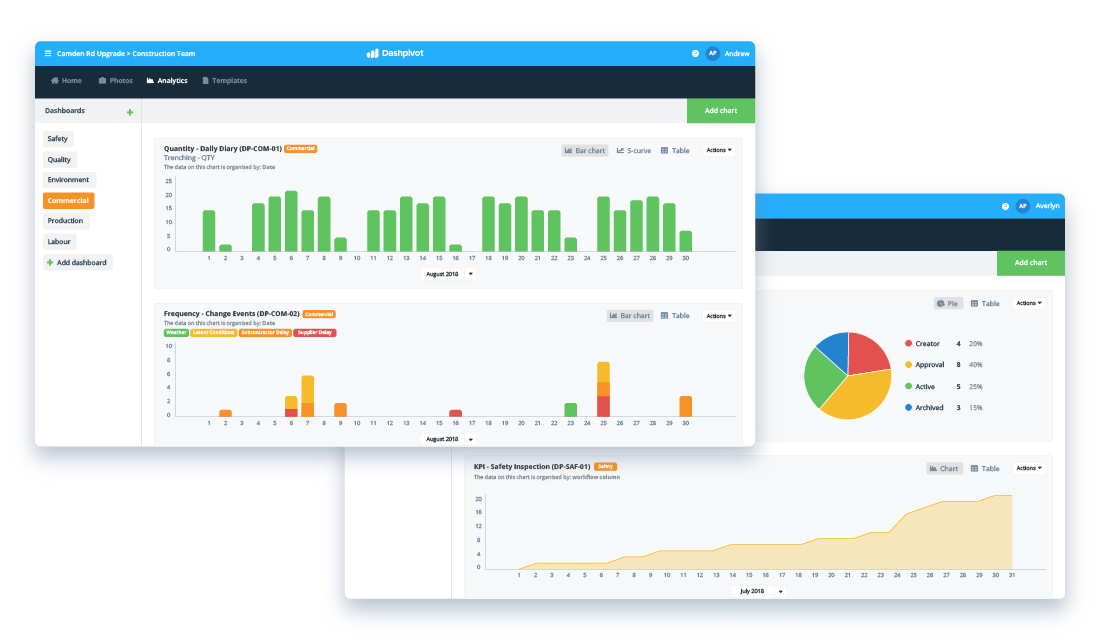Finance – Earned value management for dummies

Earned value management for dummies
The definition of earned value management for dummies
In simple terms, earned value management (EVM) is a project management technique which enables someone to measure the amount of earned value which has been produced on a project to date.
The definition of earned value management for dummies is that EVM is a way to measure project performance on the basis of:
- Time - Comparing the amount of work which has been done compared to what was scheduled (are we going to deliver in time?)
- Cost - Comparing the amount we have spent to the original project budget (have we spent more or less than we had planned)
Many of the methods for project management tracking are one dimensional in that they only assess performance based on cost alone or schedule alone, but earned value enables a project manager or assessor to look at the project and factor in multiple facets of performance.
Earned value management is one of the most powerful tools in the project management arsenal, which is why we have broken down this measure and examples in the rest of this earned value management for dummies article.
Who uses EV?
Earned value management can be used on almost any project, but it is most common in industries like construction and mining, where projects span over long periods of time, involve long forecasts and projects and many moving parts.
On some mega construction projects, the initial budget at completion (planned expenditures) are in the billions, and the project has a schedule of more than 5 years.
Relying on initial forecasts and projections from the planning phase of these projects throughout the project would not be smart. Projects like these suffer from the influences of many different internal and external shocks including changing commodity prices, weather, personnel changes, political changes, technology changes and more. The longer the project, the more likely there will be major shifts which effect the project.
To mitigate the chances that these changes will blow the budget or schedule way out of whack or leave a client, contractor or subcontractor in trouble, companies need to assess their performance throughout a project.
They need to understand early on in the project how different teams and parties are performing so they have the information they need to make smart and informed decisions about what to do to get the project back on track.
Earned value management for dummies is applicable to many different workers and many different industries.
Earned value management calculation for dummies
The most useful part of this earned value management for dummies article is probably going to be this section, which provides you with an example of an earned value calculation.
One of the major benefits of EVM is that it is an objective and quantitative measure. A project manager can't rely on their gut instinct or the advice of a friendly contractor or subcontractor. The earned value formula and EVM metrics force project managers to look at performance objectively.
As an example of what a typical earned value calculation might look like, let's take this example:
An infrastructure project to build a 100km piece of road is scheduled to be completed in 12 months, and the initial budget for the project is $10,000,000.
After 3 months, the project manager wants to see how the project is performing. She looks at current progress and finds that 25% of the project has been completed (20km of road has been finished) and $2,700,000 has been spent.
From these numbers, we can begin to formulate our earned value measures.
First, we know that our budget at completion (initial budget) = $10,000,000
Second, because we are 3 months through our 12 month project (25%), we also know that our planned value (PV) at this stage of the project was = $2,500,000 (25% x our budget of $10,000,000)
Now that we have these numbers, we can produce our key earned value management calculations.
First, we want to find our earned value on the project so far so we:
Earned value = % of project complete x BAC = 25% x $10,000,000 = $2,500,000
On face value, this looks good, our earned value is equal to our planned value, which means we are on schedule.
But, given that earned value is multi-dimensional, we also need to compare the project from a cost basis. From the above paragraph, we can see we have spent $2,700,000 to date.
We can place this number in our cost variance calculation to see how we are performing on a cost basis:
Cost variance = Earned value - actual cost = $2,500,000 - $2,700,000 = -$200,000
Like most negative numbers or numbers in the 'red', this is not a good thing. Because the cost variance result is negative, we are over budget, and we are over budget by $200,000.
This is really helpful information, because now we understand that to stay on schedule, we have spent $200,000 extra dollars. To stay on schedule during the next 9 months and bring the project back onto budget, we are going to have to find some new efficiencies or reduce costs somewhere.
If the project manager had just seen that the project was on schedule, they may have continued as planned and only realised they were ~$800,000 over budget at the end of the project.
You can learn more about all of the earned value formulas here.
How do people track EVM?
The great thing about this earned value management for dummies article is that it summarises the theoretical aspects of earned value really well (and this is the purpose of most 'for dummies' reading).
But given that earned value is a project management technique, and projects are very tangible, it's also helpful to understand what tracking and using earned value management on a real project looks like.
While there is of course some variation in what different projects in different industries look like, most of them require the same core ingredients:
- People plan the project and the schedule
- People document progress once the project begins
- People reconcile all of this data into a way that makes it possible to compare progress to the plan (through earned value or some other metrics)
To do all of this work, companies employ different methods.
Some companies still have heavily manually methods for documenting, tracking and computing all of this data. These methods involve capturing information using paper, word docs and PDFs on site - and then reconciling that data into spreadsheets where project manager can build formulas and graphs.
Other companies choose to digitise and streamline these processes through project management softwares and tools like Dashpivot.

The rise of cloud-based solutions and enterprise content management softwares has enables these companies to better manage all of the data being collected on site.
Workers can document progress using phones and tablets on sites, and the systems take care of all of the data movement so that all of that information is organised and available in real-time.
Project managers can then display this information and easily calculate earned value management and other important project measures across safety, quality and more.
Many project managers are 'stuck' doing earned value management in the manual and time-consuming methods of the past, but people reading this earned value management for dummies article can easily start doing earned value using the smarter methods of today.
Earned value is a critical project measure, but measuring and analysing these metrics shouldn't take away from making progress on a project and doing value-added work, which it can when the admin and work associated with simply getting information from the site to the office requires the majority of a supervisor, engineer or IT persons time.
People in 80+ countries use this software to keep their projects on time and on budget, with or without earned value metrics.
